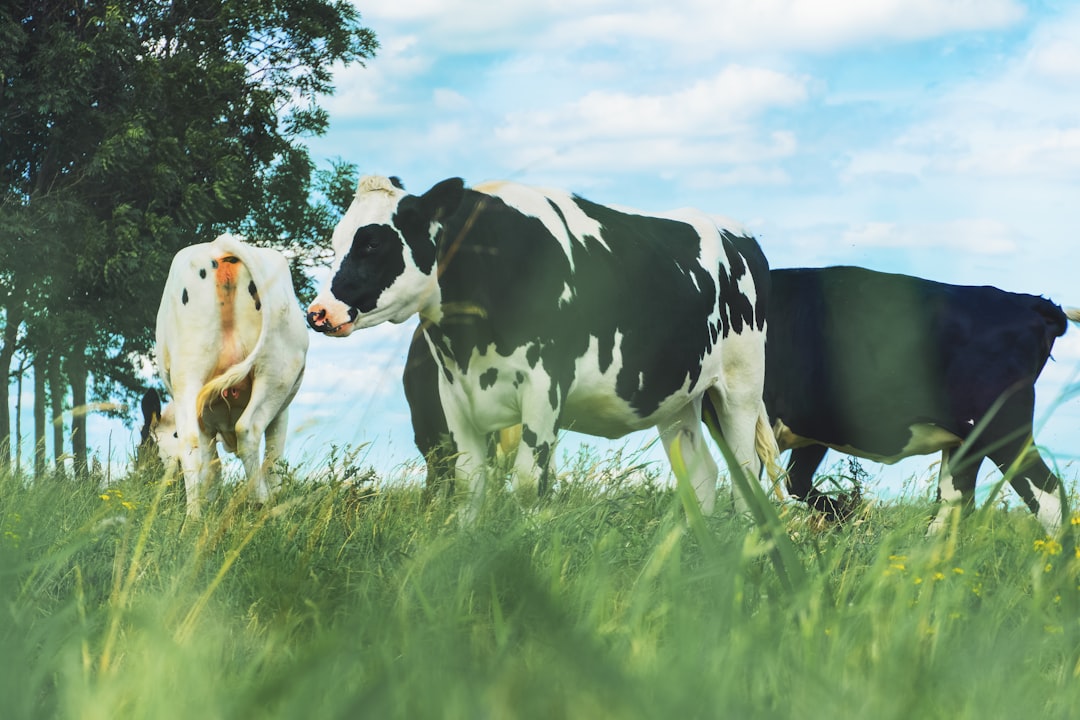As the dairy industry continues to evolve, there is a growing emphasis on sustainability and reducing reliance on conventional grains. Alternative feed sources offer a promising solution, enhancing environmental stewardship while maintaining dairy productivity. Here’s a comprehensive overview of alternative feed options for dairy cattle, focusing on their benefits and implementation strategies.
Benefits of Alternative Feed Sources
Alternative feeds can significantly enhance the sustainability of dairy farming:
-
Environmental Sustainability
-
Reduced Greenhouse Gas Emissions: By using locally sourced or waste-based feeds, dairy farms can lower their carbon footprint and reliance on imported grains.
-
Water Conservation: Some alternative feeds require less water for production compared to traditional grains.
-
-
Economic Viability
-
Cost Savings: Alternative feeds can be more cost-effective, especially when utilizing local by-products or waste materials.
-
Market Opportunities: Diversifying feed sources can create new market opportunities for dairy farmers.
-
-
Nutritional Benefits
-
Diverse Nutrient Profiles: Alternative feeds often provide a broader range of nutrients, which can enhance cow health and milk quality.
-
Types of Alternative Feed Sources
Several alternative feed sources are being explored for dairy cattle:
-
Crop Residues and By-Products
-
Canola Meal and Straw: Canola meal is high in protein and energy, while straw has limited feed value but can be used in bedding.
-
Brewer’s Grains and Soybean Hulls: These by-products are rich in fiber and can supplement low-quality forages.
-
-
Legumes and Cover Crops
-
Multispecies Swards: Incorporating legumes like clover into pastures enhances nitrogen fixation, reducing synthetic fertilizer use.
-
Brassicas and Other Forage Crops: These crops provide a nutritious alternative to traditional grasses and can be used in rotational grazing systems.
-
-
Innovative Feeds
-
Insects and Algae: Though more commonly used in poultry and aquaculture, these sources are being researched for their potential in ruminant diets.
-
Rumen-Stable Fats and Amino Acids: These supplements can optimize energy and protein use in dairy rations, reducing methane emissions.
-
Implementation Strategies
To successfully integrate alternative feeds into dairy operations, consider the following strategies:
-
Nutritional Balancing
-
Work with a nutritionist to ensure that alternative feeds meet the nutritional needs of dairy cattle, maintaining optimal health and productivity.
-
Balance rations to avoid over-reliance on any single feed source.
-
-
Farm-Scale Production
-
Grow alternative crops on-farm to reduce reliance on imported feeds and enhance sustainability.
-
Implement rotational grazing to optimize pasture use and maintain soil health.
-
-
Market Engagement
-
Engage with local markets and suppliers to source alternative feeds efficiently and cost-effectively.
-
Consider partnering with other farmers or processors to share resources and expertise.
-
Conclusion
Alternative feed sources offer dairy farmers a pathway to enhanced sustainability, reduced environmental impact, and improved economic resilience. By embracing these innovative feed options and implementing effective management strategies, the dairy industry can contribute positively to global food systems while maintaining productivity and profitability.
Additional Resources
For more detailed information on alternative feed sources and sustainable dairy practices, consider the following resources:
-
Nutrition Guides: Consult with a nutritionist to develop balanced rations incorporating alternative feeds.
-
Sustainability Reports: Review reports highlighting the environmental benefits of alternative feed sources in dairy farming.
-
Farm Case Studies: Explore case studies demonstrating successful integration of alternative feeds into dairy operations.
Citations:
- https://www.beefresearch.ca/topics/alternative-feeds/
- https://www.ufacuk.com/news/enhancing-dairy-farming-sustainability-with-soya-alternatives/
- https://www.teagasc.ie/news--events/daily/grassland/multispecies-swards-and-reduced-nitrogen-a-win-win-for-dairy-farming.php
- https://farmingfuturefood.com/putting-insects-and-algae-on-the-menu-everything-you-need-to-know-about-alternative-feeds/
- https://www.farmersguide.co.uk/livestock/5-ways-to-feed-dairy-cows-more-sustainably/
- https://www.esusagri.co.uk/the-future-of-sustainable-dairy-farming/
- https://www.farmprogress.com/business/5-alternative-feeds-to-ensure-your-cattle-get-enough-protein
- https://bewital-agri.de/en/sustainable-milk-production-through-more-efficient-feeding/
- https://dairyexporter.co.nz/reducing-reliance-on-internationally-produced-feed/
- https://ourlandandwater.nz/wp-content/uploads/2024/01/Reducing-reliance-of-NZ-livestock-systems-on-IPF.pdf

Comments
No comments yet. Be the first to comment!
You must be logged in to comment. Login